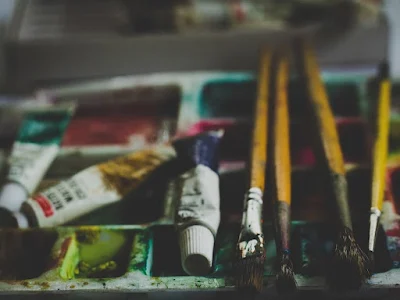How watercolors are made
Watercolors, especially Aquarius, translated the word "Aquaril" from French and means "watery". Even in kindergarten, children learn to draw, creating their first masterpieces. Using watercolors if you dissolve them in water, they turn into a transparent layer of soft pigment. As a result, the picture becomes good
When coating watercolor, the paper is moisturized with liquid water, helping to achieve a blurry brush. Have you ever thought about the composition and methods of producing this art tool
At the beginning of the development of watercolors, different components are used: vegetarian, metallic, Aniline. However, the last option is rare, where Aniline: is an organic compound C6H7N. Aniline, one of the simplest and most important aromatic amino, is used as a primary compound for the most complex chemicals has a rather unpleasant smell that resembles the smell of rotten fish, a highly pungent poison. It is not used frequently. Transparency is difficult to achieve in this case.
The common option is mineral components, which are chemical compounds as a result of the fabrication of mineral salts and their undisputed advantages are low price and stability
When preparing this type of paint, they take color, liquid, bonding pigments. Then place the mixture in bowls or press in flat cakes. "Group" is the glue of cherries or fish, gelatin, honey. The best watercolors appear when using Arabic gum, wood glue, and candy sugar in certain proportions
colorants
White, white is created by adding a large percentage of barium sulfate to the configuration. Snowy white is made as a result of the use of the excellent white type
Lead material and lead compounds let you create red tones. Dye saturation is determined by the degree to which particle size is reduced: the finer the grinding, the brighter the color.
The yellow shade consists of Ochre and yellow crimson, cadmium sulfide, and other components. These ingredients allow the development of tones ranging from lemon to Ochre. Yellowish tones of watercolor can change shade when exposed to sunlight
How watercolors are created
The production of paints begins by choosing the shadow of the metal formula. For this, several tones are mixed, or a ready version is taken. You can double the brightness of the tone by adding bleach to it.
Grinding components is a critical stage in the manufacturing process. Often, metal paints are not dispersed in a liquid, so coloring occurs because watercolor molecules are associated with paper
The manufacturing process takes place in several stages
In spherical mills, paint mills, primary metal raw materials are crushed. The type of paint depends on the level of grinding.
The mass is mixed with a bonding material, for example, Arabic gum. When making red grades, sugar candy may only be used. For chrome and green colors, the dextrin solution is used.
Combining melted mineral ingredients in water with bonding materials allows for a clay-like formula. They are rolled into layers that are usually only 8 mm thick. Then dry for 13-20 hours.
Liquid honey or glycerin is placed in watercolors and is scheduled to be packaged in tubes
Now the liquid paint is placed in a bowl, the solid paint is placed in the tiles or ditch, and the semi-liquid paint is placed in the pipe
Watercolors are widely used not only by children but also by adults. It's particularly fun that it's safe to use in practice.





Post a Comment